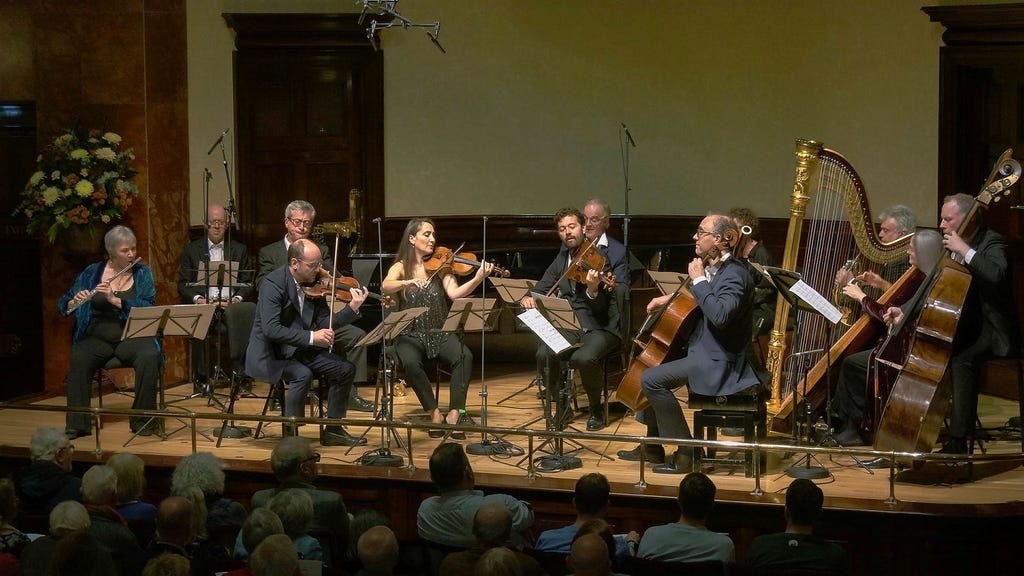Claude Debussy’s chamber music, a shimmering tapestry of impressionistic sound, reveals a composer deeply attuned to the nuances of instrumental color and the evocative power of musical suggestion. The Nash Ensemble, a renowned British chamber group celebrated for its virtuosity and insightful interpretations, has undertaken a comprehensive exploration of Debussy’s string quartet and sonatas, offering a listening experience that has garnered critical acclaim, including highest praise from reviewer Camilla Lundberg, who hails the 77-minute recording as ”pure enjoyment.” This recording, ”Debussy – String Quartet & Sonatas,” provides a captivating journey through the composer’s chamber music oeuvre, highlighting his distinctive harmonic language, his exploration of timbral textures, and his ability to conjure vivid musical imagery.
The centerpiece of this recording is Debussy’s String Quartet in G minor, Op. 10, a single-movement work that showcases the composer’s innovative approach to form and harmony. Written in 1893, the quartet breaks from the traditional four-movement structure, opting instead for a cyclical design that unifies the work through recurring thematic material and motivic transformations. The first movement, animé et très décidé, establishes a restless energy with its driving rhythms and chromatic harmonies, while the second movement, assez vif et bien rythmé, offers a contrasting scherzo-like character. The third movement, andantino, doucement expressif, explores a more introspective and lyrical realm, characterized by melancholic melodies and delicate textures. The final movement, très animé, returns to the energetic spirit of the opening, culminating in a triumphant and exhilarating coda. The Nash Ensemble’s performance captures the dynamic contrasts and emotional depth of this groundbreaking work, highlighting the interplay between the instruments and the intricate tapestry of interwoven melodies.
The album also features Debussy’s three sonatas for various instrumental combinations, each showcasing the composer’s unique approach to instrumental writing and his mastery of evocative musical language. The Sonata for Cello and Piano, composed in 1915, explores a darker, more introspective tone than his earlier works. The cello’s rich, resonant voice is expertly interwoven with the piano’s delicate and shimmering textures, creating a dialogue of contrasting timbres and emotional depths. The Sonata for Flute, Viola, and Harp, composed in 1915, showcases Debussy’s fascination with the unique sonorities of these three instruments. The ethereal quality of the harp, the warm tone of the viola, and the delicate brilliance of the flute blend seamlessly, creating a shimmering tapestry of sound that evokes a dreamlike atmosphere. The Sonata for Violin and Piano, composed in 1917, is Debussy’s final completed work, marked by a sense of fragility and introspection. Its fragmented melodies and shifting harmonies reflect the composer’s declining health and the tumultuous backdrop of World War I. The Nash Ensemble’s performance captures the delicate nuances of these sonatas, highlighting the intimate interplay between the instruments and the evocative power of Debussy’s musical language.
The Nash Ensemble’s interpretation of these works is distinguished by their attention to detail, their nuanced phrasing, and their ability to capture the essence of Debussy’s impressionistic style. The musicians exhibit a remarkable sensitivity to the subtle shifts in dynamics and tempo, creating a seamless flow of musical ideas. Their performance of the String Quartet reveals a deep understanding of the work’s cyclical structure, highlighting the interconnectedness of the different movements. In the sonatas, they capture the unique character of each instrumental combination, showcasing the interplay between the instruments and the evocative power of Debussy’s musical language. Their performance of the Cello Sonata emphasizes the contrasting timbres and emotional depths of the two instruments, while their rendition of the Sonata for Flute, Viola, and Harp captures the ethereal and dreamlike atmosphere of the work. Their interpretation of the Violin Sonata highlights the fragility and introspection of Debussy’s final composition, conveying a sense of poignant beauty.
Camilla Lundberg’s effusive praise for this recording underscores the Nash Ensemble’s exceptional artistry and their ability to bring Debussy’s music to life with remarkable clarity and emotional depth. The 77-minute duration offers a comprehensive immersion into the composer’s chamber music world, showcasing his innovative approach to form, harmony, and instrumentation. Lundberg’s assessment of the recording as ”pure enjoyment” reflects the profound impact of the Nash Ensemble’s performance, highlighting their technical mastery and their ability to communicate the emotional core of Debussy’s music. This recording serves as a testament to the enduring power of Debussy’s chamber music and the Nash Ensemble’s exceptional ability to illuminate its unique beauty and evocative power.
In conclusion, ”Debussy – String Quartet & Sonatas” by the Nash Ensemble is a must-have recording for any admirer of Debussy’s music or chamber music in general. The ensemble’s insightful interpretations, coupled with their technical brilliance, offer a captivating and deeply rewarding listening experience. This recording not only showcases the beauty and complexity of Debussy’s chamber music but also highlights the Nash Ensemble’s exceptional artistry and their dedication to bringing this extraordinary music to life. From the dynamic contrasts of the String Quartet to the evocative sonorities of the sonatas, the Nash Ensemble’s performance captures the essence of Debussy’s impressionistic style, offering a profoundly moving and enriching musical journey. The accolades bestowed upon this recording, including Camilla Lundberg’s highest praise, solidify its status as a definitive interpretation of these seminal works.














